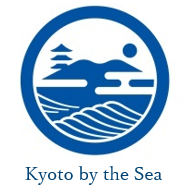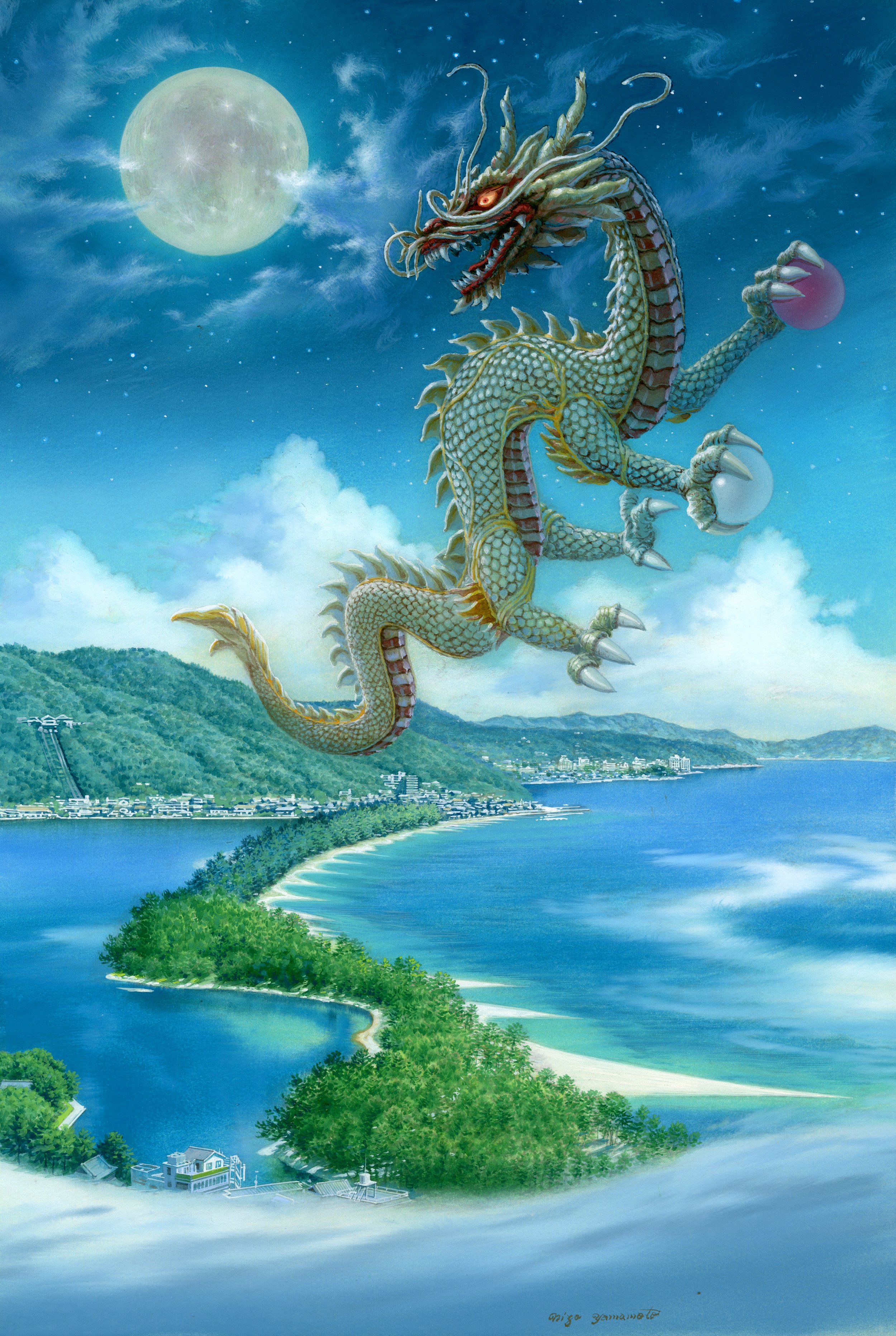Ghibli by the Sea
town and culture 4.1.2023
In the world of animation, Studio Ghibli is as iconic as it gets. They are a Japanese animation studio that opened in the 1980’s, with a distinct animation style and storytelling that made their films wildly successful. The studio’s success wasn’t limited to Japan, as the group went on to win an Academy Award for Best Animated Picture. Ghibli fans and those familiar with their films will likely be familiar with Nizo Yamamoto’s work, as he was a background illustrator and art director for some of the studio’s most famous titles, including Laputa: Castle in the Sky (1986), Princess Mononoke (1997), Spirited Away (2001), and many many more. He also worked on other feature-length films like The Girl Who Lept Through Time.
In a book Yamamoto calls “100 Scenes,” he set his sights on Japan, turning some of the country’s most iconic and bucolic locations into Ghibli-esque scenes. For those who dream of being animated into one of Studio Ghibli’s films, the pictures in this book give visitors a chance to seek out actual locations in Japan, and step into the artwork.
For people familiar with our website, you may know that “Kyoto by the Sea” is the region’s name for seven cities and towns in northern Kyoto Prefecture. The area was fortunate enough to be featured in this book, Yamamoto dedicating one drawing to each city/town, as well as one Kyoto by the Sea collage (shown above).
The Seven
MAIZURU CITY
Maizuru is a port city on the Sea of Japan. Historically, the city has found itself entangled in some of Japan’s most historic moments. Back during the warring states period, when the future of modern Japan was being decided, a long and drawn out seige in the city kept the Western Army of 15,000 troops from making it in time to fight in the decisive Battle at Sekigahara.
In the modern era, the city was the location of one of Japan’s four historic Naval Bases. The remnant red brick buildings still stand on Maizuru’s crane-shaped bay. Nowadays the buildings are used as coworking spaces, retaurant/cafe spaces, a museum, space for events like jazz concerts, and even as a location for movies.
Yamamoto captured one of Maizuru’s iconic locations from the water, giving an interesting perspective of the brick buildings framed by boats. To recreate this scene on your own, you’ll need to take a boat tour around Maizuru Bay.
FUKUCHIYAMA CITY
Yamamoto capture’s Fukuchiyama Castle, a stronghold that changed hands over the centuries. It was famously rebuilt in the late 1500’s by samurai general Akechi Mitsuhide, notorious for forcing Japan’s would-be unifier, Oda Nobunaga to commit suicide. Mitsuhide, in order to rebuild the castle quickly, ordered stones of any kind to be brought from all over the region to create the walls. The result was an unsettling patchwork of natural stone, cut stone, and grave stones. This original wall is still the base for the Fukuchiyama Castle that stands here today. Visitors to the castle can tour the inside, which has been converted into a local museum, check out the 360 degree views from the tower, and even get up close to some gravestones embedded within the wall.
AYABE CITY
With so many iconic buildings to choose from Yamamoto drew two in one image for Ayabe. Omoto Headquarters (above), and Gunze Memorial Hall (below) are two buildings in downtown Ayabe that speak to the region’s history and significance. Omoto is a Japanese religious sect that also serves as a harbor for multi-denominational prayer. They have received dignitaries from major faiths throughout the world. This is quite fitting for a city that has decidated its existence to peace, denouncing Japan’s war efforts and establishing itself as a city of peace and harmony.
The Gunze company, known for their importance in the silk industry, also worked to ensure that their predominantly female labor force had access to different opportunities like education, during a period when gender equality wasn’t even a consideration. Close to the memorial hall are some of the preserved Gunze buildings that show the past present and future of the Gunze company (they are still in business and make clothes). Also in the vicinity is the Gunze Rose Garden, the central focus of which is Anne’s Rose, the seeds of which were given to the city of Ayabe by Anne Frank’s father as a beacon of peace.
YOSANO
Yamamoto has drawn a lively scene along Chirimen Street, a road iconic for its preserved heritage buildings. Chirimen is a high-quality silk used for kimono, and this region of Japan produces 70 percent of all Japan’s high quality kimono silk, even today. Walking along this street gives one the impression of stepping back through time. The former Bito Family Residence is open to the public for tours on this street as well. Even touring the building on your own gives a sense of how wealthy merchants lived a hundred years ago.
At the beginning of the road is the Yosano Tourist Association, which is also run out of a historic building with impressive architecture. There you can even participate in a couple of different weaving experiences.
KYOTANGO CITY
Kyotango City rests on the open Sea of Japan, and is part of the UNESCO Global Geopark coastline that stretches three prefectures. Here Yamamoto has decided to capture the bay in Kumihama (the furthest west in Kyoto by the Sea and quite close to Kinosaki Onsen). On the far end of the bay, there is a thin strip of beach that separates Kumihama Bay from the Sea of Japan. It is possible to see this beach in the center of the drawing where the water and sky are separated. Kumihama is quite a unique location, with rustic accommodations, merchant buildings, and some excellent restaurants that serve locally caught seafood and oysters raised in the calm waters of the bay. The town has more than one train station, making it possible to visit the bay for a walk without a car, or visit the internationally acclaimed Kinoshita Sake Brewery.
INE
One of Japan’s Most Beautiful Villages, and for a good reason. 230 boat houses line Ine Bay, and while the drawing focuses on a slightly overhead view of the houses, Yamamoto has included a small collage that shows what the boat houses look like from the water. It’s possible to see how people could have pulled their boats into these garages when they were done fishing for the day. As it stands, the village is still actively fishing. Boats leave early in the morning and come back in the morning. People who live here are very early risers, and go to bed early as well. People visiting this village will find it just as sleepy and peaceful looking as Yamamoto has depicted it in his drawing.
MIYAZU
The city of Miyazu is most known for Amanohashidate, which translates to “bridge to heaven.” The reason Yamamoto has included a dragon in the drawing is that this naturally occuring land bridge is said to resemble a dragon flying through the sky. People insist that the best way to see this vision is to take a cable car or chair lift up to one of the two overlooks (one on either side of Amanohashidate) and look at the land bridge upside down between your legs. Upside down, the waters of the two bays reflect the sky, and the shape of the land bridge covered in pine trees turns into a green dragon flying through that water/sky.
In fact, one of the stories of how Amanohashidate was first created involves a dragon that was terrorizing the region until a wise monk came and taught the dragon the error of its ways. The dragon laid down and became the land bridge people walk across today.
For those visiting Kyoto by the Sea, we encourage you to try and find the spots that Yamamoto turned into Ghibli-esque animation and see if you can capture them from the same angles that Yamamoto was drawing from.













